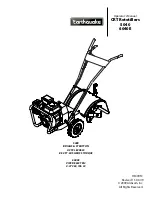
Viale Caduti per la Libertà, 4b - 40050 MONTE S. PIETRO - BOLOGNA (ITALY) –
Tel. 051/6761552 - Fax 051/6760492 - Internet: http://www.emirel.it - E-mail: [email protected] / [email protected]
9
17
S
E
T
h
U a
-
> I
S
E
T
h
U a
-
> I
-
I
0
Schermata di scelta del tipo di uscite
analogica desiderata.
Agendo sui tasti UP e DOWN è
possibile scegliere se avere a
disposizione in uscita I o (I-I0)
In this screen the user could choose
which measure is shown in the analog
output.
Using the UP and DOWN keys it is
possible to select I or I-I0.
18
S
E
T
i
C
T
=
N N
S
E
T
i
C
T
= P
T
C
S
E
T
i
C
T
= C
L
I
In questa schermata è possibile
scegliere quale protezione termica
collegare al dispositivo. Sono possibili
3 scelte:
1.
nessuna protezione
“NN“
2.
PTC “PTC” (pin 13-
14)
3.
Clicson “CLI” (pin 13-
15)
L’eventuale allarme dovuto a queste
sonde è segnalato dal LED 4 ed è
sempre a ripristino manuale
Il relè associato a questo allarme è RC
In this screen the user can choose
which thermal protection connects to
the device. There are 3 possible
choices:
4.
no protection “NN“
5.
PTC “PTC” (pin 13-
14)
6.
Clicson “CLI” (pin 13-
15)
The thermal alarm condition is
indicated by the LED A4 and it is
manually reset only.
The connected relay to this alarm is
the C relay.
19
S
E
T
j
S
P
=
1
S
E
T
j
S P =
3
P
O S
= x
x
j
I
x
= x
x
.
x
A
In questa schermata si sceglie che tipo
di funzionamento si vuole utilizzare.
1.
SP=1: si avrà una soglia di
allarme S1 valida per tutto il
range di frequenza di
funzionamento del motore.
E’ il controllo meno
sofisticato. Premendo il tasto
MODE si andrà alla fine del
menù di configurazione. A
questo funzionamento è
associato il relè di allarme
RA e il LED A1.
2.
SP=3: si dovranno
memorizzare tre punti di
funzionamento (F1,I1) ,
(F2,I2) e (F3,I3) durante
una prova con un peso
campione. Fatto questo il
dispositivo utilizzerà I1 come
soglia di allarme per
l’intervallo di frequenza 0-
F1+5Hz, utilizzerà I2 per
l’intervallo (F1+5Hz) –
(F2+5Hz) e utilizzerà I3 per
frequenze di funzionamento
superiori a F2+5Hz. A
questo funzionamento è
associato il relè di allarme
RB e il LED A2.
3.
SP=POS: si dovranno
memorizzare o
manualmente con i tasti UP
e DOWN oppure tramite
AUTOSET fino a 17 soglie di
intervento diverse, una per
ogni diversa posizione che il
carrello della gru può
assumere. A questo
funzionamento è associato il
relè di allarme RC e il LED
A3.
In this screen, the user can choose
what type of operation he wants to
use.
4.
1. SP = 1: there is only one
setpoint (S1) for the entire
frequency range of
operation of the system. It
is the less sophisticated
control.
Pressing the MODE key you
will go to the end of the
configuration menu.
At this function is associated
the RA alarm relay and the
LED A1.
5.
SP=3: 2. The user must
store three operating points
(F1, I1), (F2, I2) and (F3,
I3) using a TEST weight. 2.
Then the device will use I1
as set point for the
frequency range 0-(F1+5)
Hz, will use for the I2 set
point between (F1+5Hz)
and (F2+5Hz) and will use
I3 between (F2+5Hz) and
(F3+5Hz).
At this function is associated
the RB alarm relay and the
LED A2.
6.
SP=POS: The user can
storage all the 17 (rel.A) or
18 (rel.B) different
setpoints, one for every
different position of the
crane trolley, manually using
the UP/DOWN and MODE
keys or automatically
following the AUTOSET
procedure. At this function is
associated the RC alarm
relay and the LED A3.
20a
S
P
1
S
E
T
k
p
r
.
M O D E
È la schermata che appare prima di
cominciare la procedura di
memorizzazione della soglia di allarme
S1 in modalità SP=1. Premendo il
tasto MODE ci si porterà alla
schermata successiva.
This is the screen that appears before
you start the procedure for storing the
S1 alarm setpoint in the SP=1
operating mode.
Pressing the MODE key the system
moves to the next screen.




























